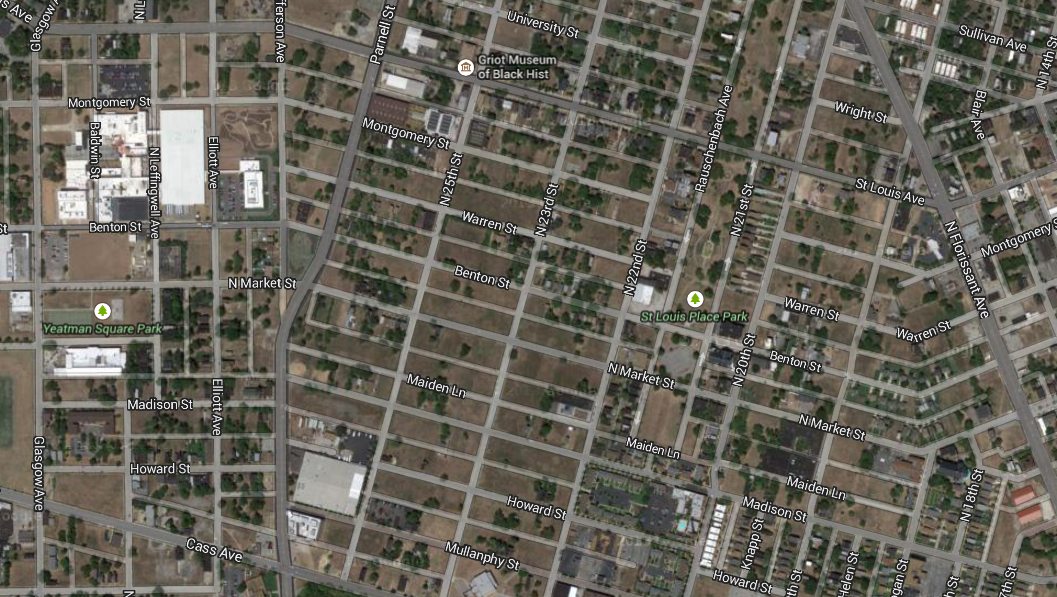Vacant land is, for St. Louis and for many older cities, both a major challenge and a major opportunity. St. Louis City alone contains approximately 20,000 vacant parcels. The City of St. Louis owns and manages approximately 10,000 of these vacant parcels, which have come into its ownership over time through tax foreclosure. Approximately 8,000 of the City-owned parcels are vacant lots without any structures. The City manages these parcels through its land bank, the Land Reutilization Authority (LRA).
Concentrations of vacant and/or underutilized land are closely connected to detrimental social, economic, and environmental impacts, including depressed property values, crime, environmental hazards, and additional disinvestment. All of these issues raise costs for local and regional governments and weaken our ability to attract and retain businesses and residents. The vast number of vacant lots, buildings, and commercial areas in the St. Louis region suggests a need to embrace additional and alternative approaches to urban land use.

-
An aerial photograph showing one of the hardest hit areas in St. Louis.
Vacant land patterns are complex and vary from neighborhood to neighborhood.
While there aren’t any quick solutions to such a multi-faceted issue, case studies across the U.S. show that a shift in public thinking and policy around the highest and best use of these properties presents a major opportunity for innovation. Repurposing vacant land for environmentally, socially, and/or economically productive uses, whether interim or long-term, can have transformative impacts on the health and vitality of neighborhoods, the City, and the region.
